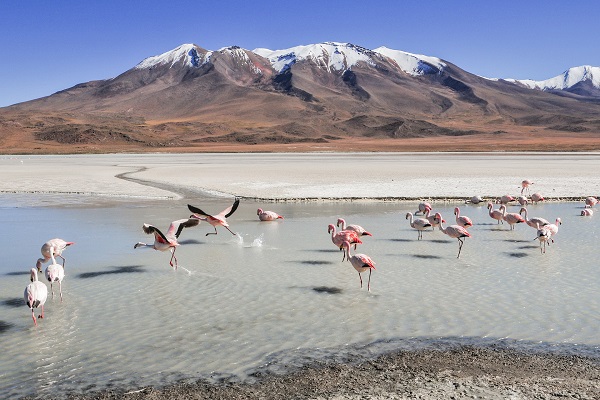Bolivia may not be the first place that comes to mind when you think about tourist destinations, but it’s a great country with a lot to offer.
There are many cities packed with history, culture, and natural beauty. This post will give you an idea of some of the great places in case you decide to visit Bolivia.
Salar de Uyuni
Salar de Uyuni is located in southwest Bolivia and covers an area of over 10,000 square kilometers.
It’s considered the world’s largest salt flat and the world’s largest mirror. Salar de Uyuni is also the largest non-polar desert in the world and contains about 50% of Bolivia’s lithium reserves.
La Paz
If you decide to visit Bolivia, do not skip it’s capital! La Paz is the highest capital city in the world. It sits at an altitude of over 13,000 feet (3,962 meters), making it a popular tourist destination for those who enjoy hiking and mountain climbing.
If you’re not into extreme sports but still want to experience this unique environment firsthand, you can take a tour around town with a local guide on foot or bicycle—or even horseback!
La Paz is home to some beautiful architecture as well as many museums and parks where you can spend your day enjoying art exhibits or strolling along tree-lined paths with panoramic views of snow-capped mountains in every direction.
La Paz has something special for everyone:
- outdoor activities like rafting down class IV rapids on Lake Titicaca or
- taking road trips through scenic national parks.
- learning about Bolivian history at one of many museums;
- shopping at local markets selling handmade goods;
- eating delicious food;
- drinking coffee made from 100% organic beans grown right here in Bolivia…the list goes on! It’s no wonder many people visit La Paz on their travels through South America!
Lake Titicaca
Lake Titicaca is the highest navigable lake in the world. It is located on a plateau between Peru and Bolivia, and its surface elevation is about 3,800 meters above sea level.
The lake has an area of 8,300 square kilometers, which makes up approximately 3% of all fresh water on Earth. The lake covers two countries: Peru and Bolivia.
The people who live around Lake Titicaca consider it sacred because they are regarded as twins of one since they share the same name (Titikaka).
This was believed to have been created by lightning from heaven during a battle between gods and giants. There are many islands in Lake Titicaca; some are inhabited while others are uninhabited or home to wildlife.
There are also many birds living in this area, including Andean Flamingos, which feed on algae growing along with their feathers so they can stay afloat more easily when flying low over water surfaces like lakes or rivers, etc.
These pelicans live near shorelines eating fish off fishers’ lines, etc. These ducks/coots/geese eat water plants found at shallow depths near shores too.
These birds often dive underwater when threatened by predators such as foxes who might want them for dinner!
Another interesting creature found here would be freshwater shrimp – these creatures don’t have any eyes, but there may still be able to sense light somehow anyways through parts of their body like legs.

Chacaltaya Glacier
If you’re looking for a place to ski when you visit Bolivia, Chacaltaya Glacier is the lowest point in the world at 4,600 meters. It’s located in the Andes Mountains of Bolivia and was once a thriving ski resort until climate change took its toll on the area.
In 2009, it was declared a UNESCO World Heritage Site and had struggled to maintain its reputation as one of the best places on Earth to go skiing.
Inca Trail
One of South America’s most popular tourist attractions, the Inca Trail is a 4-day hike through the Andes. It’s a challenging hike, but it is also rewarding.
If you want to see Peru’s “Lost City,” Machu Picchu, and can handle an intense hiking experience, then consider spending four days on this mountain path that Incan emperors used to travel between their capital city Cusco and their birthplace of Vilcabamba (modern-day Poroy).
The trail passes through lush green valleys and winds around rivers and waterfalls before ending at Machu Picchu base camp.
Bolivia is a beautiful country with a lot to offer.
Take Salar de Uyuni, which is the world’s largest salt flat. It’s also known as the “rainbow city” because of its iridescent colors.
The salt flats are beautiful, but it gets better: they’re located in southwest Bolivia, near Chile and Peru—and you can tour them in an airplane or even on foot!
Conclusion
We hope you have enjoyed this article, and now have an idea where to go if you decide to visit Bolivia. If you are interested in learning more about Bolivia and other exotic traveling destinations, please visit our website
